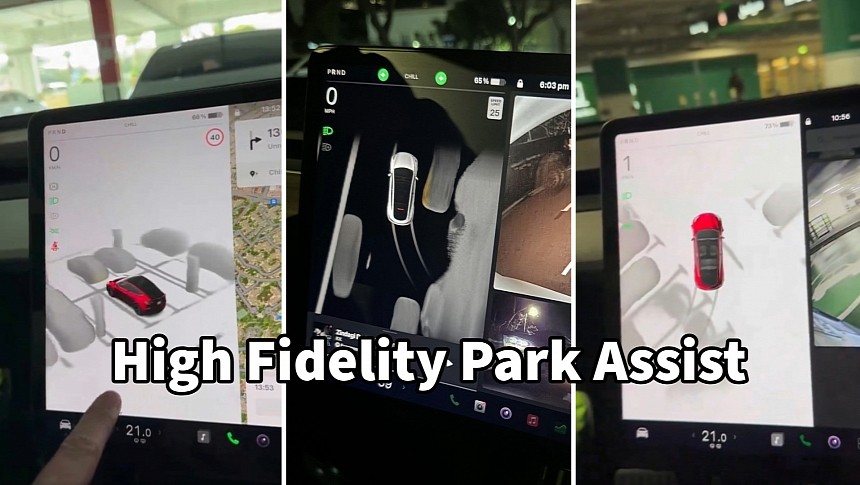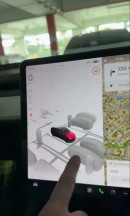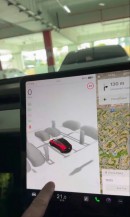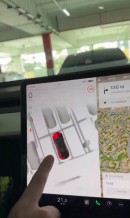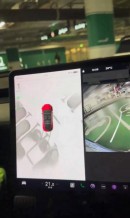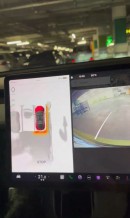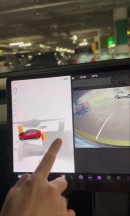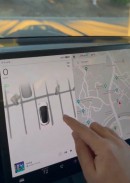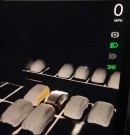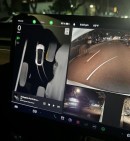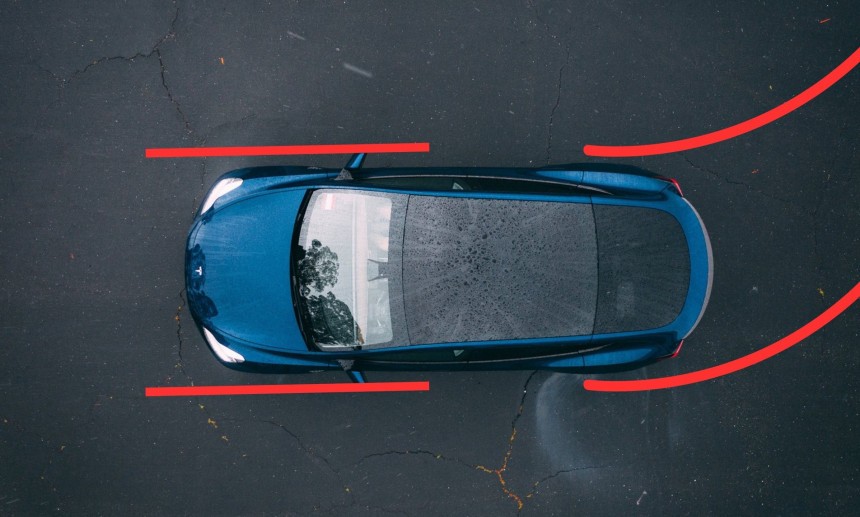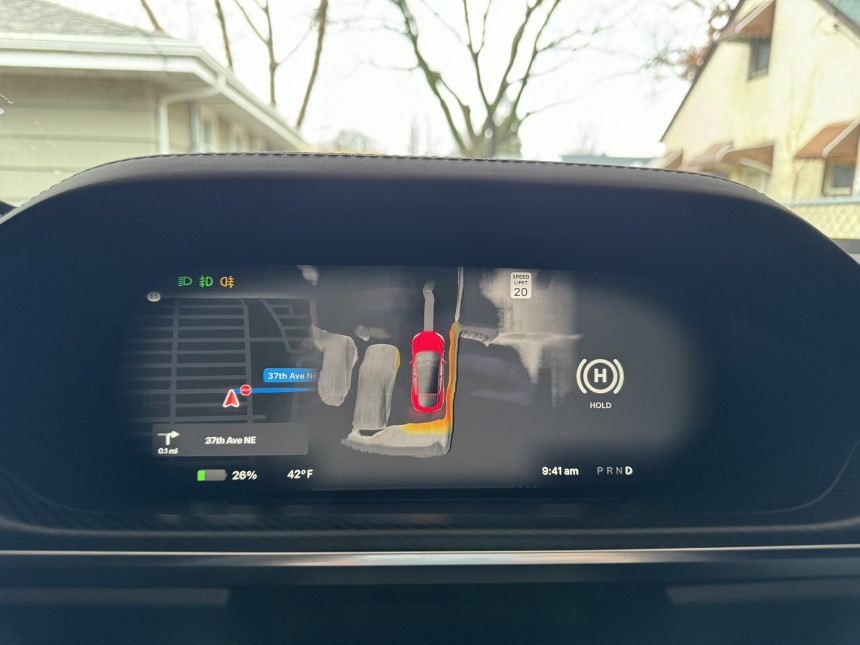Tesla owners have been asking for a 360-degree bird's eye view for years, and Tesla finally delivered it with High Fidelity Park Assist. The new feature comes with the 2023 Holiday Update, but only on Tesla vehicles without ultrasonic sensors. Here's everything we learned about it.
Tesla packs its electric vehicles with features, and the underlying software is praised as being the best in the automotive industry. However, there are some things that Tesla refused to offer, making owners jealous of other brands' EVs. Some of them are basic things that most modern cars, even the volume models, provide as standard. Take Apple CarPlay and Android Auto support as examples, although many agree that Tesla's infotainment system is so good that they rarely think about CarPlay.
Other missing features proved more polarizing, especially when the owners perceived them as a downgrade. The removal of the ultrasonic sensors caused such a shift, as the Tesla EVs lost a basic functionality, that is, being able to tell the distance to surrounding objects when parking in tight spaces. This was especially important in Europe, where the streets are narrow, and parking spots are tight and complicated to maneuver into.
Although Tesla moved to fill this hole with Tesla Vision, it was too little and too late to make a good impression. Owners had a lackluster experience with Tesla Vision, which, for some, meant damaging their cars while parking. Owners whose Teslas were delivered with ultrasonic sensors, some buying their vehicles at the last moment before Tesla removed the sensors, were still enjoying their park assistance features. Still, that could have ended at any time, as it happened with radar functionality in older cars.
Considering that every Tesla has at least seven cameras to cover the front, rear, and sides, people were puzzled as to why Tesla never thought of offering a 360-degree view around the car by stitching together the video streams from all the cameras. The so-called "bird's eye view" feature has become common on many car models, but Tesla pretended it didn't exist.
Tesla offered the possibility to see more camera streams on-screen with the Multi-Camera View, but without being a true bird's eye view. That was perceived as a failure, making people wonder what was going on. Some speculated that copyright issues prevented Tesla from offering a 360-degree view feature on its vehicles. Others pointed to the fact that side cameras don't cover the 180-degree view, making it impossible to provide a bird's eye view.
And then, the bomb dropped. After underwhelming Holiday Update release notes leaked online, Tesla upped its game and promised new features with the update. One of them was the "High Fidelity Park Assist," a major revamp to Tesla Vision that creates a 3D model of the surroundings while parking. As I've already written on December 8, when it was announced, this feature had the potential to turn into something big, much bigger than the bird's eye view that Tesla owners wanted.
Well, as Tesla started to push the 2023 Holiday Update over the weekend, we've come to see the High Fidelity Park Assist feature in action. And, lo and behold, it turned out to be everything people wanted and then some. Consider it as a bird's eye view on steroids, if you will, considering that it's capable of displaying even obstacles that are obscured by other objects. More than that, the driver can rotate the image around to have a better view around their vehicle.
However, Tesla decided to make it available exclusively on vehicles that don't have ultrasonic sensors. All of a sudden, those with ultrasonic sensors looked at their Teslas with contempt: having distance measurement and park assist was no longer enough. The pasture was now greener on the non-USS front.
This doesn't make much sense, considering that most USS Teslas are just as capable of using Tesla Vision as those shipped without the sensors. The only explanation I can think of is that Tesla is still waiting to see how the High Fidelity Park assist performs in the real world before bringing it to all vehicles. If this happens, I expect the ultrasonic sensors to become just as obsolete as the radar sensors on cars that have them.
Since the update started rolling out to customers' vehicles, Ashok Eluswami, Tesla's Autopilot Director, offered more details about this feature. Eluswami confirmed that only non-USS cars will get this feature, at least for now. As expected, High Fidelity Park Assist replaces the previous 2D obstacle band with a 3D reconstruction of the Tesla's surroundings. Tesla uses the Occupancy Network to do that, the same that powers Autopilot and FSD features.
The obstacles are modeled as a continuous distance field, which allows the Autopilot computer to represent arbitrary shapes in a smooth and computationally efficient way. The objects on the screen are not fixed; they represent the Occupancy Network's real-time prediction of their shape. The High Fidelity Park Assist can also predict painted lines on the ground, which you can see depicted in 3D in many videos shared on social media today. The goal, according to Eluswami, was that a driver could perform the complete parking maneuver just by looking at the infotainment screen.
However impressive this is, it's only the first iteration of the High Fidelity Parking Assist. Consider it a V1 release, which will be refined in future updates. Eluswami promised better geometric consistency with the cameras and better persistence of occluded obstacles. Even now, you can see how objects that are hidden from view are represented on-screen based on the Occupancy Network's "memory."
So far, the new feature has gone live for HW3 and HW4 vehicles without ultrasonic sensors. Eluswami confirmed that it will eventually be offered on cars that have ultrasonic sensors. We don't know yet whether older models with MCU2 (Intel processor) will get the High Fidelity Parking Assist feature. MCU2 launched in 2017 on the Model 3 and in early 2018 on the Model S and Model X. MCU3 vehicles started deliveries in December 2021, and Tesla also offered upgrades for MCU2 and MCU2.5 vehicles.
Other missing features proved more polarizing, especially when the owners perceived them as a downgrade. The removal of the ultrasonic sensors caused such a shift, as the Tesla EVs lost a basic functionality, that is, being able to tell the distance to surrounding objects when parking in tight spaces. This was especially important in Europe, where the streets are narrow, and parking spots are tight and complicated to maneuver into.
Although Tesla moved to fill this hole with Tesla Vision, it was too little and too late to make a good impression. Owners had a lackluster experience with Tesla Vision, which, for some, meant damaging their cars while parking. Owners whose Teslas were delivered with ultrasonic sensors, some buying their vehicles at the last moment before Tesla removed the sensors, were still enjoying their park assistance features. Still, that could have ended at any time, as it happened with radar functionality in older cars.
Considering that every Tesla has at least seven cameras to cover the front, rear, and sides, people were puzzled as to why Tesla never thought of offering a 360-degree view around the car by stitching together the video streams from all the cameras. The so-called "bird's eye view" feature has become common on many car models, but Tesla pretended it didn't exist.
And then, the bomb dropped. After underwhelming Holiday Update release notes leaked online, Tesla upped its game and promised new features with the update. One of them was the "High Fidelity Park Assist," a major revamp to Tesla Vision that creates a 3D model of the surroundings while parking. As I've already written on December 8, when it was announced, this feature had the potential to turn into something big, much bigger than the bird's eye view that Tesla owners wanted.
Well, as Tesla started to push the 2023 Holiday Update over the weekend, we've come to see the High Fidelity Park Assist feature in action. And, lo and behold, it turned out to be everything people wanted and then some. Consider it as a bird's eye view on steroids, if you will, considering that it's capable of displaying even obstacles that are obscured by other objects. More than that, the driver can rotate the image around to have a better view around their vehicle.
However, Tesla decided to make it available exclusively on vehicles that don't have ultrasonic sensors. All of a sudden, those with ultrasonic sensors looked at their Teslas with contempt: having distance measurement and park assist was no longer enough. The pasture was now greener on the non-USS front.
This doesn't make much sense, considering that most USS Teslas are just as capable of using Tesla Vision as those shipped without the sensors. The only explanation I can think of is that Tesla is still waiting to see how the High Fidelity Park assist performs in the real world before bringing it to all vehicles. If this happens, I expect the ultrasonic sensors to become just as obsolete as the radar sensors on cars that have them.
The obstacles are modeled as a continuous distance field, which allows the Autopilot computer to represent arbitrary shapes in a smooth and computationally efficient way. The objects on the screen are not fixed; they represent the Occupancy Network's real-time prediction of their shape. The High Fidelity Park Assist can also predict painted lines on the ground, which you can see depicted in 3D in many videos shared on social media today. The goal, according to Eluswami, was that a driver could perform the complete parking maneuver just by looking at the infotainment screen.
However impressive this is, it's only the first iteration of the High Fidelity Parking Assist. Consider it a V1 release, which will be refined in future updates. Eluswami promised better geometric consistency with the cameras and better persistence of occluded obstacles. Even now, you can see how objects that are hidden from view are represented on-screen based on the Occupancy Network's "memory."
So far, the new feature has gone live for HW3 and HW4 vehicles without ultrasonic sensors. Eluswami confirmed that it will eventually be offered on cars that have ultrasonic sensors. We don't know yet whether older models with MCU2 (Intel processor) will get the High Fidelity Parking Assist feature. MCU2 launched in 2017 on the Model 3 and in early 2018 on the Model S and Model X. MCU3 vehicles started deliveries in December 2021, and Tesla also offered upgrades for MCU2 and MCU2.5 vehicles.
